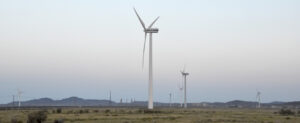Third International Scientific and Practical Conference “Eagles of the Palearctic: Study and Conservation”
Raptors Conservation. Suppl. 2. Proceedings of Conferences
Pre-construction Risk Assessment and Post Construction On-site Surveys and Mitigation for Bird-Wind Turbine Interactions
Katzner T. (Forest & Rangeland Ecosystem Science Center U.S. Geological Survey, Boise, USA)
Contact:
Todd Katzner tkatzner@usgs.gov
Recommended citation: Katzner T.E. Pre-construction Risk Assessment and Post Construction On-site Surveys and Mitigation for Bird-Wind Turbine Interactions. – Raptors Conservation. 2023. S2: 436–438. DOI: 10.19074/1814-8654-2023-2-436-438 URL: http://rrrcn.ru/en/archives/35202
Pre-construction risk assessment and postconstruction on-site surveys and mitigation are important components of understanding and addressing wildlife interactions with wind facilities. This presentation will cover all of these topics in detail.
Pre-construction risk assessment can be a 3-phase process. Phase 1 involves preliminary site assessment, often done remotely, and is based especially on literature review. If this review suggests at-risk species may be present, then phase 2 involves verification of their presence at the site and assessment of site-specific features (topography, land cover) that may influence risk from turbines. Finally, phase 3 should involve quantitative studies to count numbers and assess potential risk. Additional surveys similar to those conducted postconstruction are also important.
Pre-construction risk assessment can be a 3-phase process. Phase 1 involves preliminary site assessment, often done remotely, and is based especially on literature review. If this review suggests at-risk species may be present, then phase 2 involves verification of their presence at the site and assessment of site-specific features (topography, land cover) that may influence risk from turbines. Finally, phase 3 should involve quantitative studies to count numbers and assess potential risk. Additional surveys similar to those conducted postconstruction are also important. Post-construction surveys are typically focused on counting numbers of individuals and, more recently, estimating population-level consequences of fatalities. Counting fatalities requires surveys at and around individual wind turbines. Critical to this effort is defining the search area correctly (a small bird can fall far from turbines), accurate species identification establishing useful search intervals that vary with the size of the target species, and estimating rates of both searcher efficiency and scavenger removal. Best practices call for standardizing survey methodology across facilities to facilitate comparison and to making data public. Estimating population-level consequences of fatalities requires identifying the population of origin of affected animals, estimation of the size of the population in those origin areas, and building demographic models to estimate population-level consequences.
Mitigation also typically follows a threestep hierarchy, with (1) avoidance; (2) minimization; and (3) compensation. Avoidance of collision is typically achieved with either macroor micro-siting, typically underpinned by risk modeling or expert opinion. Minimization of numbers of collisions can be accomplished by detection and deterrence or operational or responsive curtailment. Compensation involves replacement of animals killed and can be achieved by habitat improvement, food supplementation, or reduction of other threats to a species. Effective replacement requires identifying the population of origin of affected animals and the factors limiting that population.
Best practices for pre- and post-construction assessment and mitigation are rapidly evolving. As wind energy rapidly expands in Central Asia, there are opportunities to implement state-of-the-art approaches to these assessments, significantly improving work currently being done in other regions.

